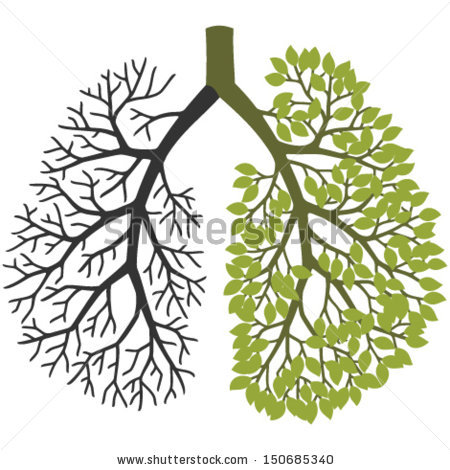❄ Notes on breathing - An introduction to Pranayama (Part 1) ✎ ✎ ✎
Breathing is the key to life, and the sad truth is that many of us are barely surviving..
Oxygen plays several important roles in the human body for homeostasis (especially metabolism or energy production/consumption). I won't get into all the details here, but I would strongly encourage you to read up about it online if you are interested in the topic. Here is a link to a scientific yet concise article with a lot of information about oxygen's role in human biology:
http://www.oxygen-review.com/human-body.html
Around the age of 6 years is when we start to move more fully into what's known as the 'default mode network' of the brain. The external world becomes very important in consciousness and the powerful connection to our bodies gradually begins to weaken. Breathing tends to become very shallow from this point onward. Shallow breathing means that the body is constantly deprived of oxygen, and this leads to a number of problems. An oxygen-deprived state is associated with an anxious or scattered state of mind, and leaves the person in a continual, pathological cycle of stress and tension as we grow older, not to mention the negative effects on the body itself. Parents can certainly play a vital role in preventing this. So if you are a parent, I believe it is your responsibility to remind your child to breathe deeply and to practice it with them occasionally. This will prevent them from ever adopting shallow breathing, allowing them to thrive and have a healthier body and mind throughout their entire lives.
For the rest of us, it is never too late to start correcting this through different kinds breathing practices (or "pranayama", as we refer to it in yoga). Let's get into it now by looking more closely at some of the important elements involved with breathing, to develop a better understanding of how we might go about correcting a shallow breathing habit.
Alveoli are microscopic vessels in the lungs which are most densely concentrated in the lower sections of the lungs, and least densely concentrated in the upper sections. Their role is simply to capture and absorb oxygen molecules as air enters the lungs. This explains why shallow breathing leads to oxygen deprivation, and reiterates my point above when I said that many of us are barely surviving - those alveoli in the lower sections of the lungs are not being used to absorb the oxygen molecules that the body sorely needs!

You can do a simple test now to determine which part of the lungs you are using to breathe, simply by placing one hand over your chest, and one hand over your navel, and then see which area is moving more as you breathe. Try not to interefere with your natural breath, seeing as this is just a simple assesment.
The lungs, however, are not the only important element when it comes to breathing. Shallow breathing requires very little movement of the diaphragm (arguably the most important muslce in the human body), and almost no movement of the intercostal muslces (thin sheets of muscle in between the ribs which allow the thoracic or "floating" ribs to move and expand). After many years of incorrect breathing, the neuromuscular connection between the brain and those muscles become almost non-existent. This is the reason why it can take several months to unlearn the bad habits of shallow breathing that we have developed, and to re-train the neuromuscular system to adopt healthier patterns of breathing.
Further on in this series we will be looking at specific techinques to improve your breathing, and therefore improve your overall wellbeing and state of mind. Please remeber to follow me so that you can read them as soon as they come out.
Namaste for now! 🕉
TY for this share :::)
Thanks Brendan!!! I deeply breath in life :)